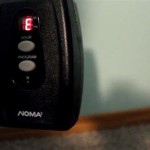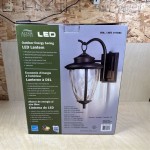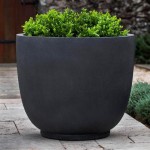How Much Are Outdoor Wood Burners? A Comprehensive Price Guide
Outdoor wood burners have gained considerable popularity as a way to extend the usability of outdoor spaces, providing warmth and ambiance to patios, decks, and gardens during cooler months. However, the price of these appliances can vary significantly depending on a range of factors. Understanding these factors is crucial for consumers seeking to make an informed purchase that aligns with their needs and budget. This article examines the key elements determining the cost of outdoor wood burners, offering a comprehensive price guide for potential buyers.
Factors Influencing the Price of Outdoor Wood Burners
Several factors contribute to the overall price of an outdoor wood burner. These can be broadly categorized into material, size and heating capacity, design and aesthetics, features and accessories, and brand reputation. Each of these plays a significant role in shaping the final cost and quality of the product.
Material: The material used in the construction of an outdoor wood burner significantly impacts its price. Steel, cast iron, and stainless steel are the most common materials. Steel burners are generally the most affordable, offering a balance between durability and cost-effectiveness. However, they are susceptible to rust if not properly maintained. Cast iron burners, on the other hand, are more expensive due to their superior heat retention and durability. They can withstand high temperatures and provide a consistent heat output over extended periods. Stainless steel burners are the most expensive option, offering excellent resistance to rust and corrosion, making them ideal for coastal environments or areas with high humidity. The thickness of the material also matters; thicker steel or cast iron translates to a more durable, and consequently, more expensive product.
Size and Heating Capacity: The size of the wood burner directly correlates with its heating capacity, and therefore, its price. Smaller, portable wood burners are designed for smaller outdoor spaces and are typically less expensive. These are suitable for patios or decks where targeted warmth is desired. Larger, more robust wood burners are designed to heat larger areas, such as expansive patios or gardens. These units often feature larger fireboxes and chimneys, allowing for more efficient burning and greater heat output. The larger the unit and the higher the BTU (British Thermal Unit) rating, the higher the price will be. Consumers should consider the size of their outdoor space and the desired level of warmth when selecting a wood burner to ensure they are not overspending on a unit that is too large or underperforming with a unit that is too small.
Design and Aesthetics: The design and aesthetics of an outdoor wood burner can also influence its price. Basic, functional designs are generally more affordable. These units prioritize practicality and heat output over visual appeal. More elaborate and decorative designs, featuring intricate patterns, custom finishes, or unique shapes, will command a higher price. Some wood burners are designed to mimic the look of traditional fireplaces or ornate stoves, adding a touch of sophistication to the outdoor space. The level of craftsmanship and detail involved in the design contributes directly to the overall cost. Custom-built wood burners, tailored to specific design preferences, are the most expensive option, allowing for complete personalization but requiring a significant investment.
Features and Accessories: The inclusion of additional features and accessories can significantly increase the price of an outdoor wood burner. Features such as spark screens, ash catchers, adjustable dampers, and cooking grates enhance the functionality and safety of the unit. Spark screens prevent embers from escaping and potentially causing fires, while ash catchers simplify the cleaning process. Adjustable dampers allow users to control the airflow, regulating the burning rate and heat output. Cooking grates transform the wood burner into an outdoor cooking appliance, adding versatility and value. Accessories such as protective covers, tool sets, and firewood racks also contribute to the overall cost. The more features and accessories included, the higher the price of the wood burner will be.
Brand Reputation: The brand reputation of the manufacturer can also impact the price of an outdoor wood burner. Established brands with a proven track record of quality and durability often command higher prices. These brands typically invest in research and development, use higher-quality materials, and offer superior customer service. Consumers are often willing to pay a premium for a reputable brand, knowing that they are investing in a reliable and long-lasting product. Lesser-known or generic brands may offer lower prices, but the quality and durability may be questionable. It is important to research the brand and read reviews before making a purchase to ensure that the wood burner meets the desired standards.
Price Ranges for Different Types of Outdoor Wood Burners
Outdoor wood burners come in a variety of styles, each with its own price range. These styles include fire pits, chimineas, outdoor fireplaces, and wood-burning stoves. Understanding the price ranges associated with each type can help consumers narrow down their options and identify the best fit for their budget and needs.
Fire Pits: Fire pits are typically the most affordable option for outdoor wood burning. They range in price from around $50 for basic, portable models to $500 or more for larger, more elaborate designs. The price depends on the size, material, and features. Simple steel fire pits with a basic design are at the lower end of the price range, while copper or stainless steel fire pits with decorative elements and added features, such as spark screens and cooking grates, are at the higher end. Fire pits are a popular choice for casual gatherings and provide a simple and effective way to add warmth and ambiance to an outdoor space.
Chimineas: Chimineas are another popular option for outdoor wood burning, offering a unique and aesthetically pleasing design. They typically range in price from around $100 to $800 or more, depending on the material, size, and craftsmanship. Clay chimineas are the most traditional and often the most affordable, while cast iron or steel chimineas are more durable and can withstand higher temperatures. Larger chimineas with intricate designs and added features, such as rain caps and cooking inserts, are at the higher end of the price range. Chimineas are known for their ability to direct smoke upwards and away from the seating area, making them a good choice for smaller outdoor spaces.
Outdoor Fireplaces: Outdoor fireplaces offer a more substantial and permanent outdoor heating solution. They range in price from around $500 for prefabricated models to $5,000 or more for custom-built designs. Prefabricated outdoor fireplaces are typically made of concrete or stone veneer and are relatively easy to install. Custom-built outdoor fireplaces can be tailored to specific design preferences and can be constructed from a variety of materials, including brick, stone, and tile. Outdoor fireplaces provide a focal point for the outdoor space and offer a significant heating capacity, making them suitable for larger gatherings and extended use.
Wood-Burning Stoves: Wood-burning stoves designed for outdoor use offer a more efficient and controllable heating solution. They range in price from around $300 to $2,000 or more, depending on the size, material, and features. Outdoor wood-burning stoves typically feature a closed firebox and a chimney, allowing for more efficient burning and better control of the heat output. They often include features such as adjustable dampers, air wash systems, and catalytic converters, which improve combustion and reduce emissions. Wood-burning stoves are a good choice for those seeking a more efficient and environmentally friendly outdoor heating option.
Additional Costs to Consider
In addition to the initial purchase price of the outdoor wood burner, there are several additional costs to consider. These include installation costs, fuel costs, maintenance costs, and permit fees. Failing to account for these costs can lead to unexpected expenses and can significantly impact the overall affordability of the outdoor wood burner.
Installation Costs: The installation costs for an outdoor wood burner can vary depending on the type of unit and the complexity of the installation. Simple fire pits and chimineas typically require minimal installation, while outdoor fireplaces and wood-burning stoves may require professional installation. The cost of professional installation can range from a few hundred dollars to several thousand dollars, depending on the scope of the project. Factors such as the need for a foundation, chimney installation, and gas line connection can all contribute to the overall installation cost. It is important to obtain quotes from multiple contractors before proceeding with the installation to ensure that the price is competitive and the work is performed to a high standard.
Fuel Costs: The cost of fuel for an outdoor wood burner can also vary depending on the type of wood used and the frequency of use. Seasoned hardwood is the preferred fuel for wood burners, as it burns hotter and cleaner than softwood. The cost of seasoned hardwood can range from $100 to $300 per cord, depending on the location and availability. The amount of wood required will depend on the size of the wood burner and the frequency of use. It is important to purchase wood from a reputable supplier to ensure that it is properly seasoned and free from pests or diseases. Alternatively, some wood burners can be used with alternative fuels such as propane or natural gas, which may have different cost considerations.
Maintenance Costs: The maintenance costs for an outdoor wood burner can include cleaning, repairs, and replacement parts. Regular cleaning is essential to prevent the buildup of ash and creosote, which can reduce the efficiency of the unit and increase the risk of fire. Repairs may be necessary to address issues such as cracks, leaks, or malfunctioning components. Replacement parts, such as spark screens, grates, and dampers, may need to be replaced over time due to wear and tear. The cost of maintenance will depend on the type of wood burner and the frequency of use. It is important to follow the manufacturer's recommendations for maintenance to ensure the longevity and safe operation of the unit.
Permit Fees: Some municipalities require permits for the installation of outdoor wood burners. The cost of a permit can vary depending on the location and the type of unit. It is important to check with the local building department to determine whether a permit is required and to obtain any necessary permits before proceeding with the installation. Failure to obtain a required permit can result in fines or legal action.

Outdoor Wood Burner Stove Asgard

Large Outdoor Wood Burner Bbq

What Is The Best Log Burner For Your Garden Direct Stoves Resources

Large Outdoor Wood Burner Bbq

Outdoor Wood Heater Garden Log Burner With Flue Arada Stoves

Fiesta Garden Stove And Chimnea Outdoor Logburner

Best Outdoor Logburner Top Garden Wood Burning Stove

The Garden Cube Outdoor Wood Burning Stove

Rb73 Quaruba Large Outdoor Wood Burning Stove Bonfire

Outdoor Bbqs And Stoves Chesneys
Related Posts







